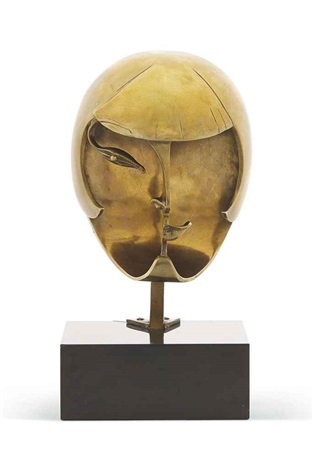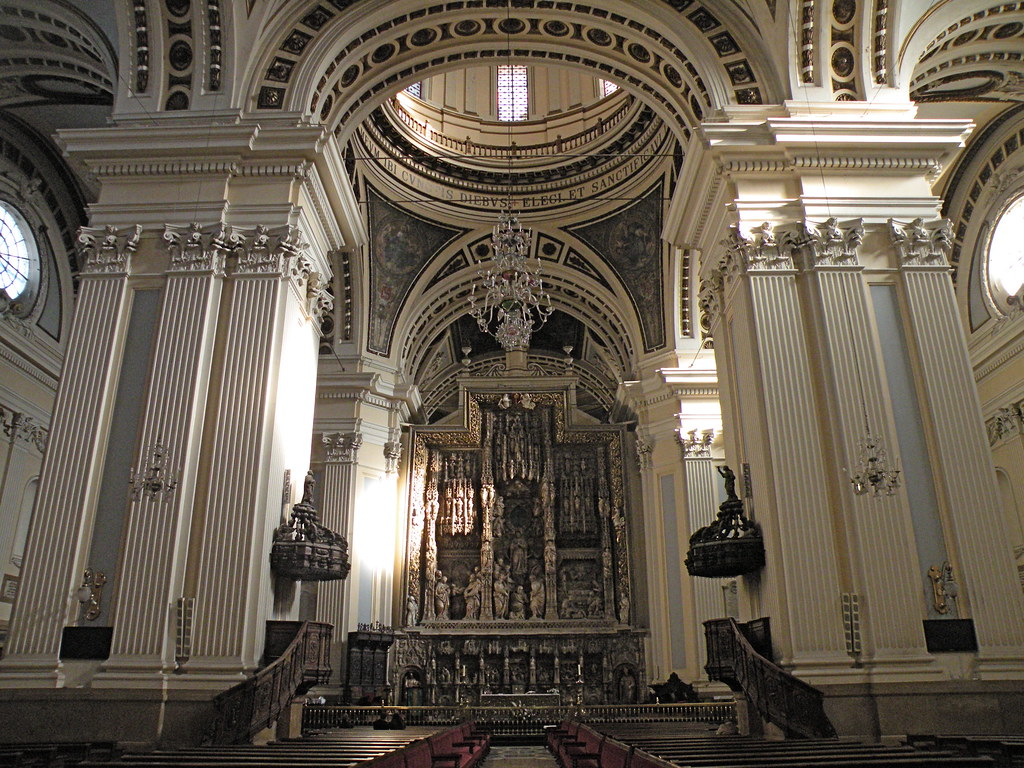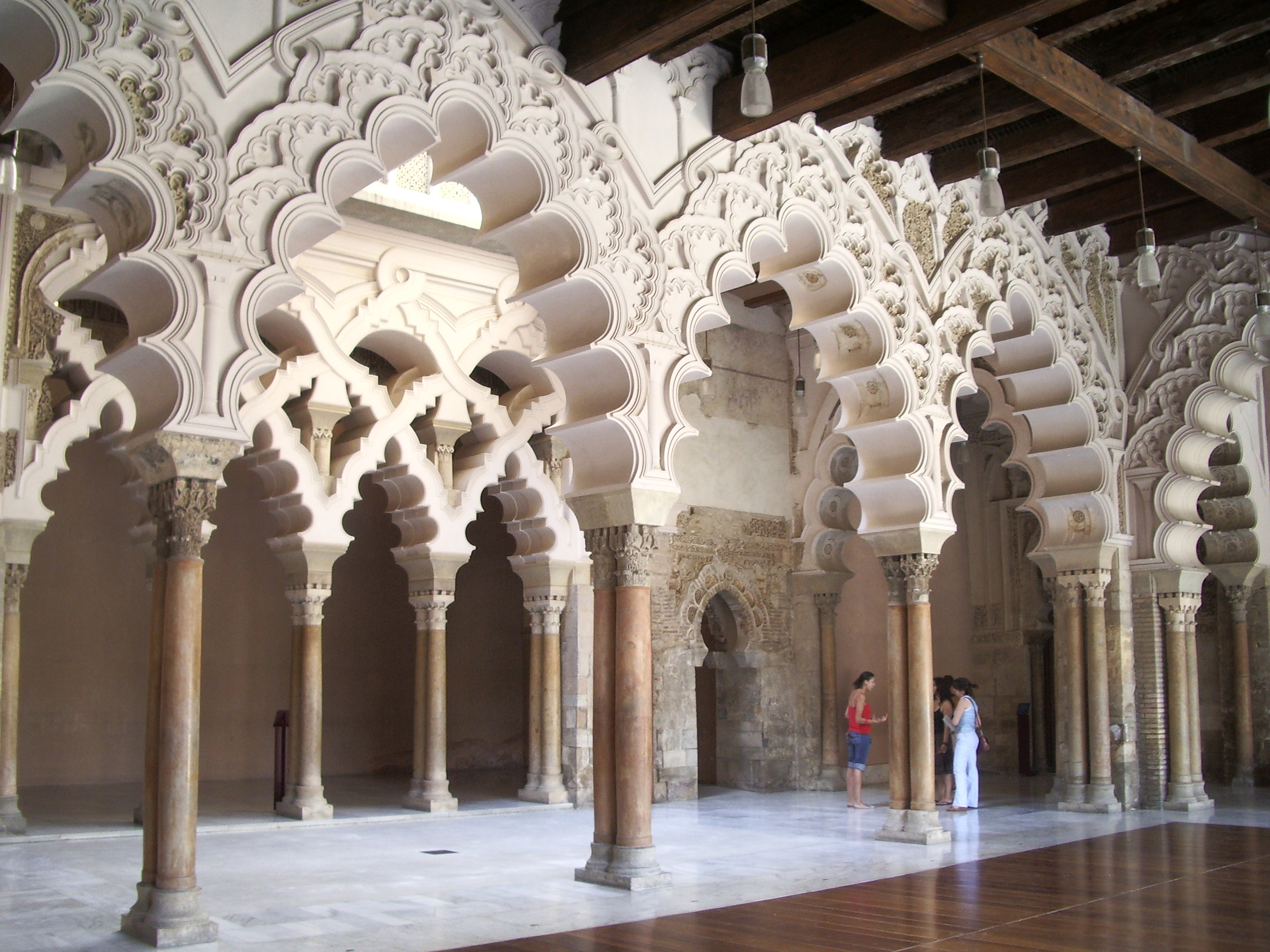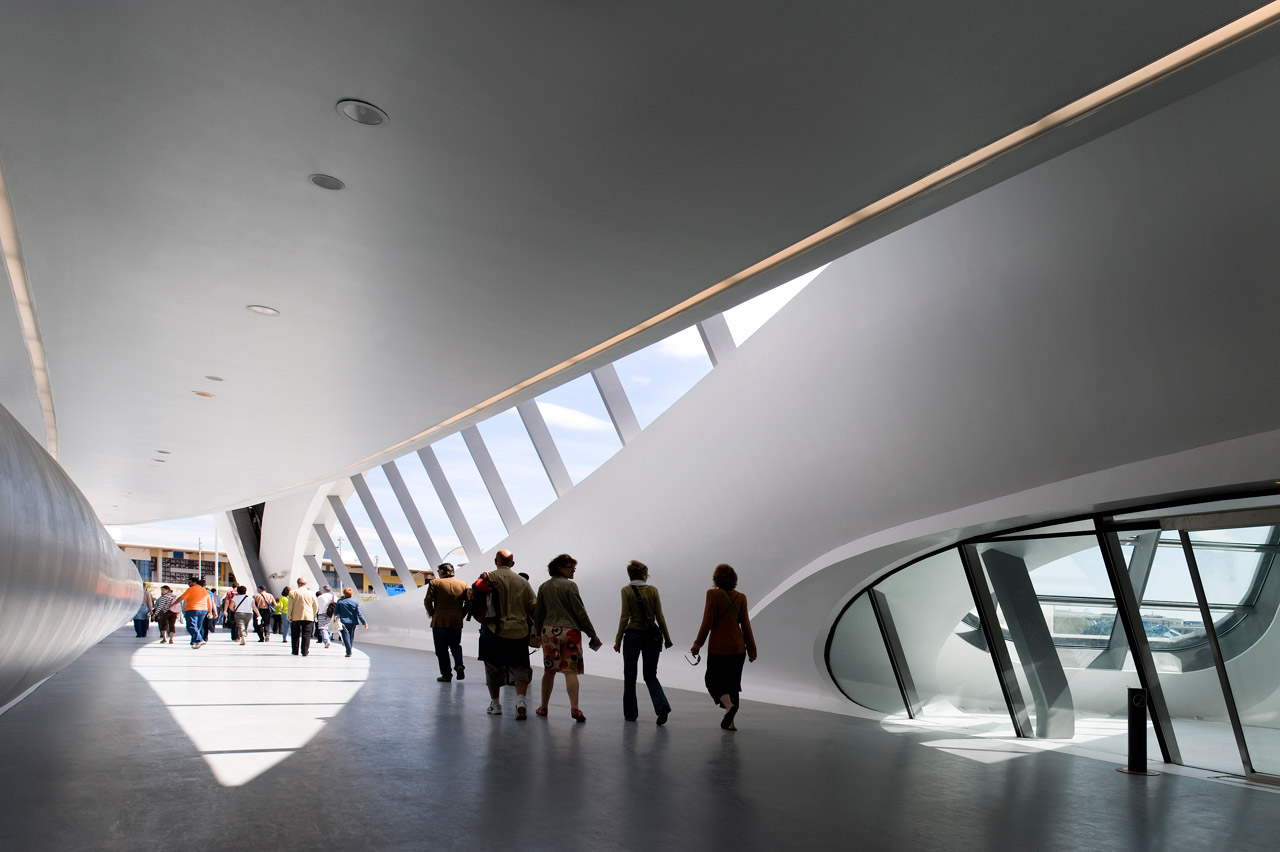Aragon February 12, 2019
Guadalajara (pop 85,000). In the NM ‘European City” series, it is in Castilla–La Mancha located roughly 60 kilometres (37 miles) northeast of Madrid on the Henares River.
History. It was founded by the Andalusians in the 8th century who built the Moorish Bridge over the Henares River, the now ruined old Alcázar (Arabic for “palace”), and a mosque which later became the former Cathedral of St. Mary.
In 1085, it became Christian and was the birthplace of conquistador Nuño de Guzmán, who in 1542 founded Guadalajara, Mexico.
The Mendoza Family completed El Palacio del Infantado as their main residence in the early 1480s, the oldest surviving building built in a pure Renaissance style outside Italy.
The city was destroyed in the Peninsular War (1808–1814) by the French Army and in the Spanish Civil War (1936–1939). The Communist-led militia murdered three Carmelite nuns in Guadalajara after they refused to renounce their faith. In 1937, the four divisions of the Italian Corpo Truppe Voluntarie (CTV), attacked Republican positions 16 kilometres outside Guadalajara and Republican aircraft destroyed all the vehicles in the mechanized spearhead with casualties in the thousands. Ernest Hemingway and other war correspondents labelled the attack, “Italian débâcle at Guadalajara.” The Italian Army of the Mussolini dictatorship acquired a reputation for incompetence that never left it before the armistice of 1943.
In the 1960s industrial growth was started. Ciudad Valdeluz, a whole brand new city for 30,000 was built at the Spanish High-Speed Train Station but went bankrupt and less than 500 inhabitants moved in and the remaining infrastructure is currently in slow degradation. The AVE trains are used by only 60 passengers a day.
Tourism. The bridge across the Henares river is Arab but built on Roman foundations. It has several historic buildings such as the Palacio del Infantado. The church of San Ginés and the church of Saint Mary are built in the Mudejar style. The chapel of “Capilla de Luis de Lucena” has several fresco paintings on its walls and ceiling. In the Spanish Civil War, many buildings were damaged: some remains of the defunct rooms of the palace and of some other buildings are preserved in museums of the city. The Alcázar of Guadalajara has only ruins and walls.
It was 280kms from Alcala de Henares to Zarogoza, a lovely fast drive on E-90/A2 (4 lane divided, 120kms/hr, no tolls, no traffic) through a high plateau (maximum altitude 1210m) with few villages, little agriculture, many wind turbines and a landscape of hills with grass, sagebrush and juniper and the occasional rocky bluffs. The large metal bull sculptures are on the crown of several hills.
ZARAGOZA (pop 785,000)
It is the capital city of Aragon on the Ebro River and its tributaries, the Huerva and the Gállego, roughly in the center of both Aragon and the Ebro basin, 199 metres in elevation. Zaragoza hosted the Expo 2008 World’s Fair on water and sustainable development.
The city is famous for its folklore, local gastronomy, and landmarks such as the Basílica del Pilar, La Seo Cathedral and the Aljafería Palace, several part of the Mudéjar Architecture of Aragon, a UNESCO World Heritage Site.
I ended up parking for free on the main street along the river about 100m from the cathedral. The first 5 places are all in the downtown core, a lovely ramble of cobbled streets and squares.
Cathedral of the Savior (Spanish: Catedral del Salvador) or La Seo de Zaragoza is part of the World Heritage Site Mudéjar Architecture of Aragon. The cathedral is located on the Plaza de la Seo and is commonly known as La Seo (Spanish for “see”) to distinguish it from the nearby El Pilar, whose name (pillar) is a reference to an apparition of Mary in Zaragoza (also known as Saragossa). They both share co-cathedral status in metropolitan Zaragoza.
The location of the Seo has its roots in the old Roman forum. The Museum of the Forum is found below the Plaza del Pilar, across from the facade of the cathedral.
Construction of the Romanesque cathedral began in the 12th century and was rebuilt in Gothic between 1316-19. Two aisles were added in 1491, the tower in the 17th and parts of the of St Michael’s chapel have decorative geometric designs of Aragonese Mudejar art. There are many outstanding chapels, most with large paintings, painted domes, gilt, alabaster carving and great metal gates. The 15th-century St Bernard’s Chapel is all exquisitely carved alabaster. The central choir itself has 8 small chapels and a large brass canopy over the Holy Christ Chapel. The highlight is the Tapestry Museum with 63 tapestries, most from the 15 and 16th centuries and the first tapestry of each board. In three large rooms, they cover many themes: religious, moral, historical and mythological. Most were donated by church dignitaries and citizens and others were purchased in the 1700s. €3 reduced
Caesaraugusta Forum Museum. Beside the front of the cathedral, this is the excavation of the original Roman forum – mostly foundations and some mediocre archaeology, not even worth the free entry. It is part of Roman Zaragoza – there are also baths and a theatre. Free if >65
Museo Goya – Voleccion Ibercaja. On 3 floors, the first is pre-Goya, the second Goya (and many of his engravings) and the third post-Goya Spanish art. I watched a film on his life – after he went deaf, his art took on a particularly morbid bent. €3 reduced
Palacio de los Condes de Argillo. This is one of those impossible places to find (not on Google Maps) as everyone only knows it as the Museo Pablo Gargallo. It was a long walkabout where I asked at least 6 people for directions. On Plaza San Felipe, the palace was built between 1659-1661 and the museum moved here in 1985. The highlight of the palace is the open courtyard with its geodesic glass dome and bas-relief frescoes around the top.
Pablo Gargallo (1881-1934), born near Zaragoza was an avant-garde artist, best known for his figurative Cubist sculptures, cast from steel, bronze, and marble. Gargallo often made three-dimensional forms from flat sheets of cardboard, paper, and metal. Three of the most famous examples of this technique titled Masque de Greta Garbo à la mèche were based on the Swedish-born Hollywood star Greta Garbo. Born on January 5, 1881 in Maella, Spain, he is considered among the most influential Spanish artists of the 20th century. Having spent a decade of his life in the Montparnasse Quarter of Paris, Gargallo came into contact with artists like Max Jacob, Juan Gris, and Pablo Picasso, with whom he formed friendships and whose ideas and work would continue to impact him for the rest of his career.
He produced wonderful sculptures. I came to see the building but loved his work, mostly bronze horses, figures and masks. There are also many drawings and a good display on casting sculptures. The highlight is the Kike de Montparnasse, a brass mask. Free if >65

Basilica of Our Lady of the Pillar. The multiple spires of this huge edifice dominate Zarogoza’s skyline. Towers are on each corner and many of the domes are tiled in yellow, green, white and blue tiles. In 1781, Goya painted the ceiling of the large dome. The main altar carved from alabaster may be the highlight. Free


Museum of Zaragoza. On the south side of the centre, this typical “city” museum tells its history from the Stone Age to the present. Free if >65
Palacio de la Aljaferia. About 1km west of the centre, this fortified medieval Islamic castle was built during the second half of the 11th century. The palace currently contains the regional parliament of Aragon. The structure is unique as the only large building of Spanish Islamic architecture of the era of the Taifas (independent kingdoms). In 2001, the original restored structures of the Aljafería were included in the Mudéjar Architecture of Aragon a World Heritage Site.
After the reconquest of Zaragoza in 1118 by Alfonso I of Aragón, it became the residence of the Christian kings of the Kingdom of Aragón, In 1593 it was turned into a military fortress.

Bridge Pavilion was constructed for Expo 2008 as one of its main landmarks. It is an innovative 280-meter-long (919 ft) covered bridge that imitates a gladiola over the river Ebro, connecting the neighbourhood of La Almozara with the exposition site, and thus becoming its main entrance. The new bridge is, at the same time, a multi-level exhibition area. Made of fibreglass-reinforced concrete, the outer skin of the building is covered with 29,000 triangles of fibres in different shades of grey.
During the Expo 2008, the Bridge Pavilion hosted an exposition called Water – a unique resource. When the Expo was over, the building was purchased by the local savings bank Ibercaja to use it as a site for expositions.


MUDÉJAR ARCHITECTURE OF ARAGON
An aesthetic trend in the Mudéjar style, which is centred in Aragon and has been recognized in some representative buildings as a World Heritage Site by UNESCO.
The chronology of the Aragonese Mudejar occupies the 12th to the 17th century and includes more than a hundred architectural monuments located predominantly in the valleys of the Ebro, Jalón and Jiloca.
The first manifestations have two origins: 1. a palatial architecture linked to the monarchy, which amends and extends the Aljafería Palace maintaining Islamic ornamental tradition, and 2. a tradition which develops Romanesque architecture using brickwork rather than masonry construction and which often displays Hispanic-rooted ornamental tracery. Examples of the latter type can be seen in churches in Daroca, which were started in stone and finished off in the 13th century with Mudejar brick panels.
Buttresses are often absent, especially in the apses which characteristically have an octagonal plan with thick walls that can hold the thrust from the roof and which provide space to highlight brick decorations. When present, buttresses are often a feature of the naves, where they may be topped by turrets, as in the style of the Basilica of Our Lady of the Pillar. There may be side chapels that are not obvious from the exterior. Churches in neighbourhoods (such as San Pablo of Zaragoza) or small towns do not usually have aisles, but locations for additional altars are provided by chapels between the nave buttresses. It is common for these side chapels to have a closed gallery or ándite (walkway), with windows looking to the outside and inside of the building. This constitution is called a church-fortress, and his prototype could be the church of Montalbán.
Typically the bell towers show extraordinary ornamental development, the structure is inherited from the Islamic minaret: quadrangular with a central pier whose spaces are filled via a staircase approximation vaults, as in the Almohad minarets. On this body stood the tower, usually polygonal. There are also examples of octagonal towers.
In 1986, Unesco declared the whole Mudejar complex of Teruel a World Heritage Site, which was extended in 2001 to include other Aragonese Mudejar monuments:
The tower, roof and dome of the Cathedral of Saint Mary of Mediavilla
Tower and church of San Pedro
Tower and church of San Martín
Tower and church of The Savior
MONTE PERDIDO (Mont Perdu in French meaning lost mountain) is the third highest mountain in the Pyrenees at 3355 m. Located in Spain, lies hidden from France by the seemingly impenetrable peaks of the Cirques of Gavarnie and Estaubé in the north of Huesca province. The mountain forms part of the Monte Perdido Range and is located in the Ordesa y Monte Perdido National Park.
Access to the mountain is easier from Spain than from France. The route starts near the village of Torla, Aragon, at the Ordesa Valley and ascends the Cirque de Soaso towards the Refuge of Góriz before the stiff climb to the summit. It is a dangerous climb with snow.
National Park. Monte Perdido is the centre-piece of the Spanish Ordesa y Monte Perdido National Park established in 1918 with just 21 square kilometres of land. The park has grown significantly to 156 square kilometres and incorporates the whole of the Añisclo Canyon. There are more than 1,500 species of flowers, 171 species of birds, 32 different mammals and 8 types of reptiles in the Ordesa. Most magnificent of all is the lammergeier (bearded vulture) with a 3-metre wingspan. The Pyrenees is one of the few places in Europe where these birds can be seen.
ROCK ART of the IBERIAN MEDITERRANEAN BASIN
The group of over 700 sites of prehistoric rock art, also known as Levantine (meaning “from Eastern Spain”) art, were collectively declared a World Heritage Site by UNESCO in 1998. The sites are in the eastern part of Spain and contain rock art dating to the Upper Paleolithic or (more likely) Mesolithic periods of the Stone Age. The art consists of small painted figures of humans and animals, which are the most advanced and widespread surviving from this period, certainly in Europe, and arguably in the world. It is notable for the number of places included, the largest concentration of such art in Europe. Its name refers to the Mediterranean Basin; however, while some sites are located near the sea, many of them are inland in Aragon and Castile-La Mancha. The World Heritage Site includes rock art across an area that stretches from the Pyrenees to the province of Granada, falling within the territory of the autonomous communities of Catalonia, Aragon, Castile-La Mancha, Murcia, Valencia and Andalusia.
History. They clearly represent a very different style from the much more famous Art of the Upper Paleolithic in caves on either side of the Pyrenees, but yet may well show continuity with it. The oldest art is from 8,000 BC, and the most recent is from around 3500 BC. The art, therefore, spans a period of cultural change. It reflects the life of people using primarily hunter-gatherer economic systems, “who gradually incorporated Neolithic elements. Later scenes show men leading horses, and some cattle shown may be domesticated.
Discovery. Levantine Art was first discovered in Teruel in 1903. The artists appear to have used feathers, in a relatively complex painting technique that produced relatively simple figures, often outlined, apparently after the main body was painted. Some figures are shallowly engraved rather than painted. The figures are relatively small, between about 8 and 1 inch (20.3 and 2.5 centimetres) high, and in one or two colours. The paint was generally very thin, using mineral earth (often reddish) or charcoal, and the paintings are preserved by a very thin transparent layer of limescale forming over them from water dripping down the wall.
The human figure, which is rare in Paleolithic art, acquires great importance in Levantine Art. The human figure is frequently the main theme, and when it appears in the same scene as animals, the human figure runs towards them. The painting known as The Dancers of Cogul is a good example of movement being depicted. The most common scenes by far are of hunting, and there are scenes of battle and dancing, and possibly agricultural tasks and managing domesticated animals. In some scenes gathering honey is shown, most famously at Cuevas de la Araña en Bicorp. Humans are naked from the waist up, but women have skirts and men sometimes skirts or gaiters or trousers of some sort, and headdresses and masks are seen
The scenes depicted are often moments of drama; dead and dying men and animals are often shown, and sometimes battles between humans, can include up to 44 figures. Scenes of human execution by archers and in one case by hanging are also seen; these scenes of conflict seem to come from the later periods of painting and from a more limited area “around the Gasulla and Valltota gorges” in the province of Castellón.
The archer’s bow is given great prominence, as the top weapon of the period; some bows are very large. A famous dance scene at the Caves of El Cogul shows eleven women in skirts circling a naked man with an erect phallus.
The tools represented in Levantine Art are usually arrows, sticks, quivers and bags, and ropes, perhaps used as lassos or trip-ropes.
Animals are very often represented, especially large mammals that are suitable prey for hunting, or that became domesticated; birds, fish (even near the coast) and insects are rarely shown, apart from the occasional spider and bees in honey-gathering. Some of the animals depicted are identifiable as belonging to species we can see in the present day, and the relative frequency of animal species shown has been used as evidence for dating. Some animals have been interpreted as exotic Ice Age species now extinct in Europe, but this is controversial. Some animals appear to have been overpainted to change their species, perhaps reflecting changes in fauna. The main species shown include deer, goats, boar, cattle and dogs.
The art is commonly found in rock shelters (protected by a natural ledge) and shallow caves in which sunlight can penetrate easily. Many sites are heavily decorated with figures superimposed. The sites are often in ravines in steep valleys that would be of relatively little use to farmers, but perhaps ideal for hunting by ambush and stampeding animals into a dead end.
In general, the state of conservation is poor. However, various initiatives have been undertaken to protect the sites at a local level. For example, the municipality of Villar del Humo has designated a cultural park.
List of Protected Sites: This is a collection of 727 rock shelters, caves, or ravine walls (as listed by UNESCO) that contain a figurative representation, or geometrical design. The sites are distributed as follows among the 16 provinces in the 6 regions already mentioned:
Valencian Community: 301 places — Alicante: 130 places, Castellón: 102 places. Valencia: 69 places.
Aragon: 132 places — Teruel: 67 places, Huesca: 47 places, Zaragoza: 18 places.
Castile-La Mancha: 93 places — Albacete: 79 places, Cuenca: 12 places, Guadalajara: 2 places.
Murcia: 72 places.
Andalusia: 69 places — Jaén: 42 places, Almería: 25 places, Granada: 2 places
Catalonia: 60 places — Tarragona: 39 places. In Ulldecona are the largest set of paintings of Catalonia, Lleida: 16 places, Barcelona: 5 places.